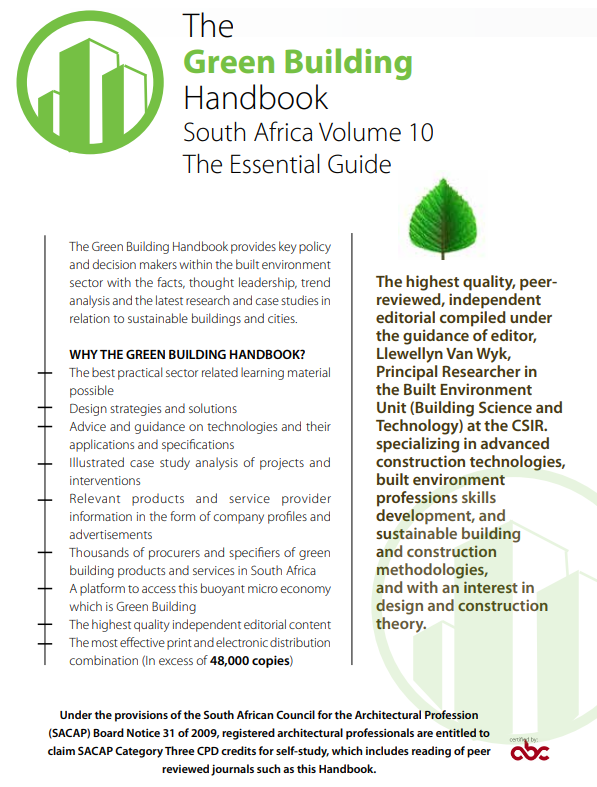High-performance green building
Towards a conceptual framework

01 October 2016
English
uKESA Librarian, Llewellyn van Wyk
Book chapter
Council for Scientific and Industrial Research
Africa
The construction, operation and maintenance of the built environment is a significant consumer of resources, many of which are not renewable (inter alia steel, aluminium, clay, cement, aggregates). It is also recognised that “current planning, design, construction, and real estate practices contribute to patterns of resource consumption that seriously jeopardize the future of the Earth’s population”. One of the identified interventions to influence resource consumption is building performance design targets. Kibert notes that “a unique vocabulary is emerging to describe concepts related to sustainability” including concepts such as “Factor 4 and Factor 10, ecological footprint, ecological rucksack, biomimicry, the Natural Step, eco-efficiency, ecological economics, biophilia, and the precautionary principle”.
It has been argued that building performance is not a well understood or articulated concept in the building and property industries, at least not in the same way that the performance of typical consumer goods, such as an automobile, is understood. More often than not, a description of a building will include its location, prospect and aspect, and accommodation schedule. By contrast, the description of an automobile will include, inter alia, its fuel consumption, acceleration times, maximum speed, power-to-weight ratio, and braking distances and times. It can also be argued that the absence of, or a poor understanding of, building performance results in at least two consequences: first, clients are uninformed and therefore have a low expectation of how a building should perform and second, there is no or little pressure placed on the construction industry to improve performance through innovation. Establishing the requisite performance aspects becomes critical to defining and measuring building performance. This chapter reviews relevant literature to establish what will be required to develop a conceptual framework for conceptualising and measuring high-performance buildings.



Comments